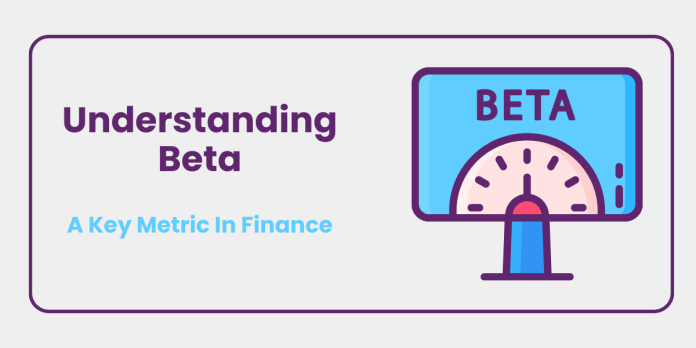In the world of finance, the term “beta” is commonly used to assess the risk associated with an investment. It is a crucial metric for investors, analysts, and portfolio managers. Beta helps in understanding how a particular asset or investment is likely to perform in relation to the broader market. In this blog, we will explore what beta is, why it is important to understand it, and how it is calculated.
What is Beta?
Beta, often denoted as β, is a measure of an asset’s or investment’s volatility in relation to a benchmark index, typically the market as a whole. It quantifies the sensitivity of the asset’s returns to the movements of the benchmark. In simpler terms, beta tells us how much investment is likely to move in response to changes in the broader market.
Understanding Beta
- Risk Assessment: Beta is primarily used as a risk assessment tool. It provides investors with valuable information about an investment’s risk relative to the market. An asset with a beta of 1.0 is expected to move in sync with the market. If the beta is greater than 1.0, the asset is considered more volatile than the market, while a beta less than 1.0 indicates lower volatility.
- Diversification: Beta plays a crucial role in portfolio management. By understanding the beta of individual assets within a portfolio, investors can build a diversified portfolio with an appropriate level of risk. A well-diversified portfolio includes assets with different betas, which can help mitigate risk and optimize returns.
- Investment Strategy: Beta can guide investment strategies. Investors with a low-risk tolerance may opt for assets with lower beta values, seeking stability and income. On the other hand, those willing to take on more risk may choose assets with higher beta values, aiming for potentially higher returns, albeit with increased volatility.
- Benchmarking: Beta is often used for benchmarking and performance evaluation. Analysts compare an investment’s historical beta to its benchmark to assess how well it has performed relative to the market. This comparison helps in identifying assets that outperform or underperform expectations.
Calculating Beta
The formula to calculate beta is relatively straightforward:
Beta = Covariance (Asset Returns, Market Returns) / Variance (Market Returns)
Here’s a breakdown of the components:
Covariance: Measures how two sets of returns move together. Positive covariance indicates that when one goes up, the other tends to go up as well, and vice versa.
Variance: Reflects the dispersion of returns for the market index.
Interpreting Beta Values
Beta greater than 1.0: Investments with beta values exceeding 1.0 are considered more volatile than the market. For example, if an asset has a beta of 1.5, it is expected to move 1.5 times more than the market in response to market fluctuations.
Beta less than 1.0: Investments with beta values below 1.0 are less volatile than the market. A beta of 0.75 suggests that the asset is likely to be 25% less volatile than the market.
Beta equal to 1.0: An asset with a beta of 1.0 moves in line with the market, mirroring its fluctuations.
Here’s a list of High and low-beta stocks:
| High beta Stock | Beta |
| Adani Enterprises Ltd. | 2.51 |
| Ircon International Ltd. | 2.01 |
| Mazagon Dock Shipbuilders Ltd. | 1.96 |
| Adani Ports and Special Economic Zone Ltd. | 1.92 |
| Suzlon Energy Ltd. | 1.86 |
| Low beta Stocks | Beta |
| Gland Pharma Ltd. | -0.13 |
| Timken India Ltd. | -0.02 |
| Procter & Gamble Health Ltd. | 0.01 |
| KSB Ltd. | 0.02 |
| Sanofi India Ltd. | 0.06 |
Conclusion
In the realm of finance, understanding beta is crucial for making informed investment decisions. It helps investors assess risk, build diversified portfolios, and tailor their investment strategies to their risk tolerance and financial goals. Beta is a valuable tool for benchmarking and performance evaluation, aiding in the evaluation of an investment’s historical performance relative to the market. By comprehending beta and its implications, investors can navigate the complex world of finance with greater confidence and effectiveness.
Disclaimer:This blog has been written exclusively for educational purposes. The securities mentioned are only examples and not recommendations. It is based on several secondary sources on the internet and is subject to navigate the complex world of finance with greater confidence and effectiveness.


